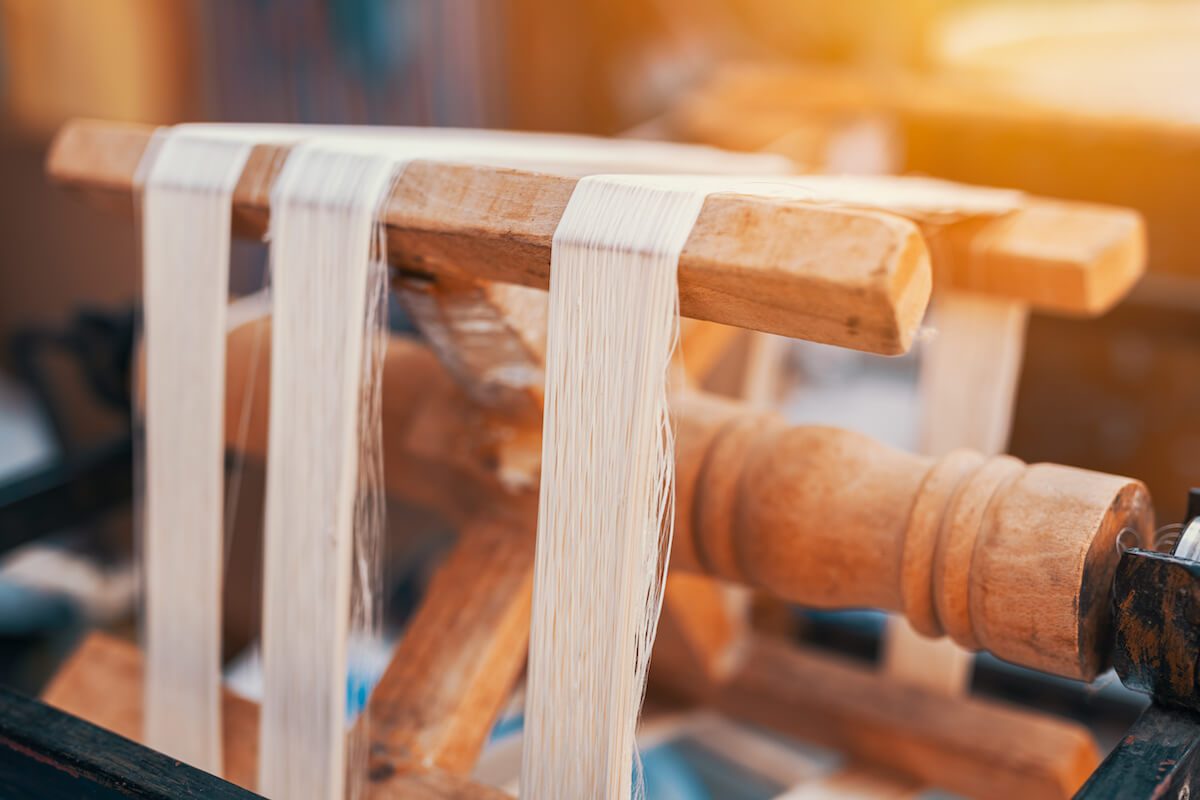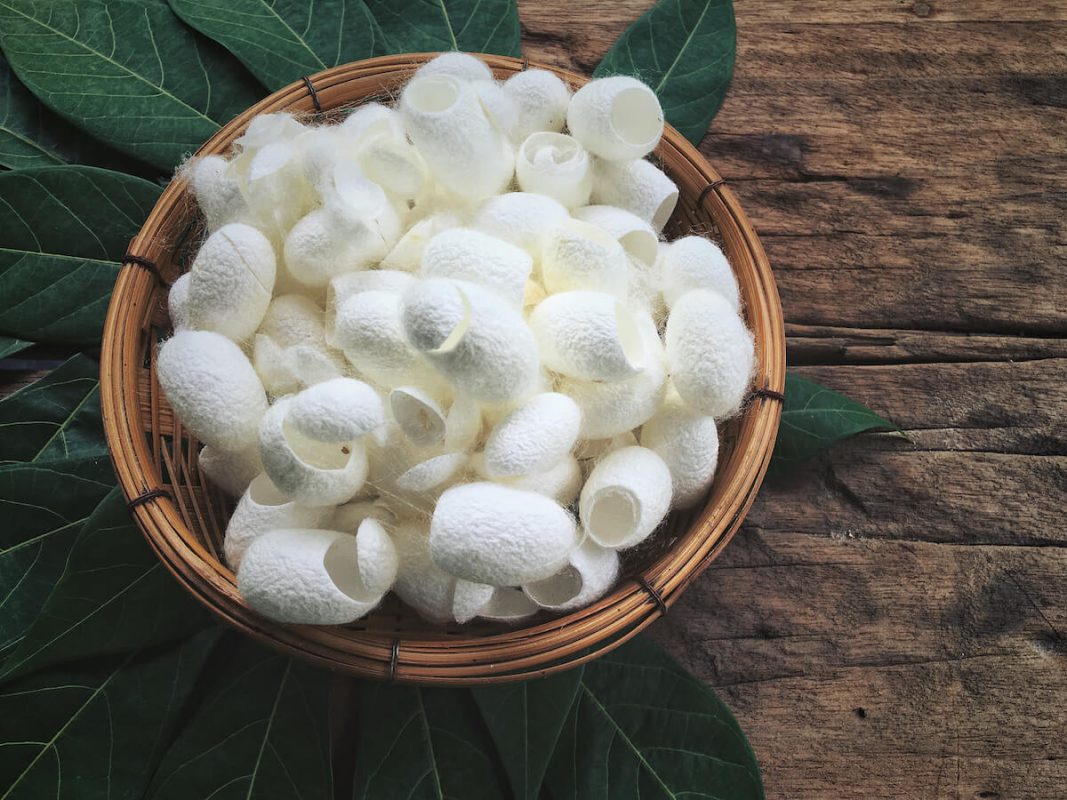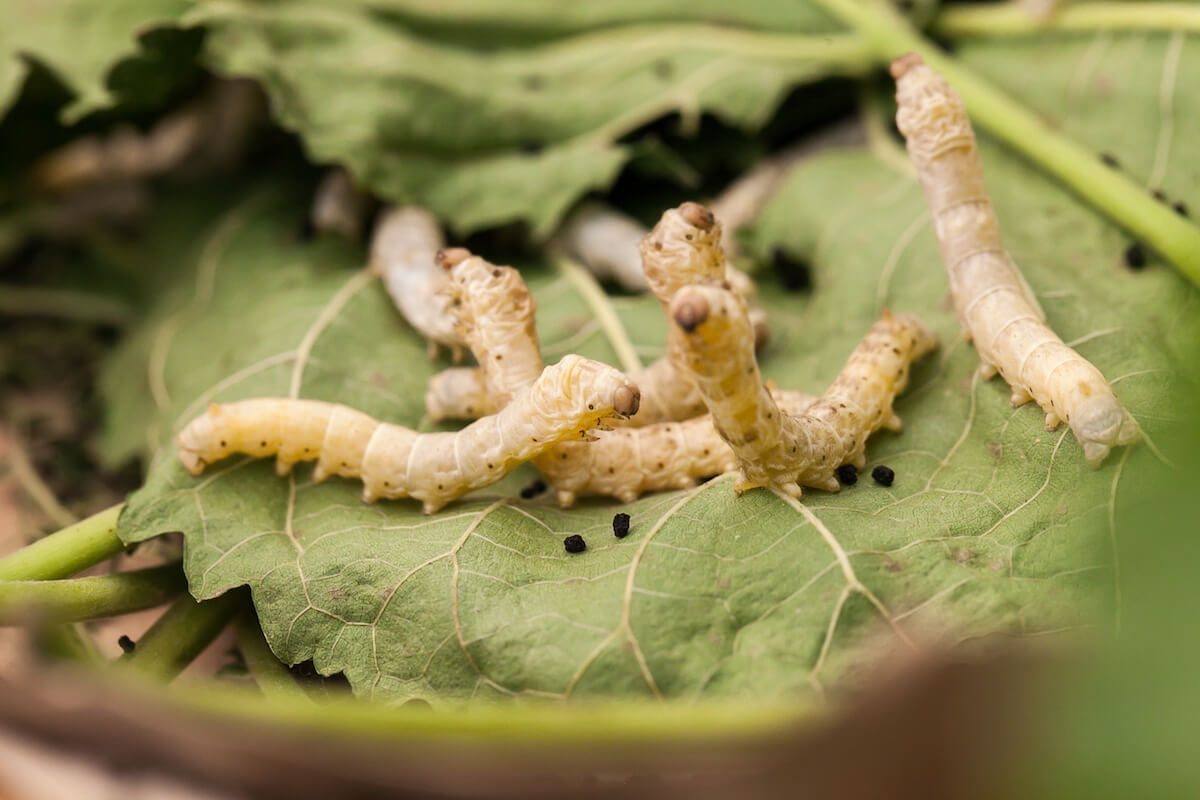Blog
10 Interesting Silkworm Facts (That Will Blow You Away)
Did you know that humans and silkworms have worked together for thousands of years?
Bred in ancient China for over 5,000 years, silkworms were prized for producing silk.
Here are some interesting facts about these incredible insects.
1. Northern China Natives
During ancient Chinese times they began to be cultivated for their silk.
Around the year 2696 BC, the wife of the Yellow Emperor discovered a silkworm cocoon falling into her tea. She noticed that the cocoon was made of a strong yet soft thread.
She invented the silk loom and taught other women how to combine these threads in to make fabric.
Silk was highly prized in Ancient China, only the royal family and noble classes were permitted to wear it.
2. China’s Secret Silk Industry
Cultivated in secret, silkworms and silk making remained within the borders of China for over 1000 years.
As a valuable product, silk was traded along The Silk Road which stretched from China, through Western Asia to Rome.
It was only in the 6th Century when Byzantine Monks smuggled out silkworm eggs.
For the fashion experts at Tierra Alma, silk continues to be a popular textile. “China is still the principle manufacturer of silk today. But thanks to its spread, places such as Italy are known as one of the most prominent silk makers in the world.”

3. Silkworms Are Domesticated
Silkworms have been selectively bred for thousands of years since silk was discovered.
This means most silkworms are found in silkworm farms and not in the wild. The industry is annually valued around $200-500 million.
Alongside bees, silkworms are the only other insect humans have domesticated.
4. Silkworms Only Eat Mulberry Leaves
Rich in vitamins and minerals, mulberry leaves have all the nutrients silkworms need.
Silkworms, once hatched eat wildly, consuming about 50 times their weight in mulberry leaves.
Mulberry leaves are good for human consumption, too.
According to the weight loss hypnotherapy experts at Emotional Health, mulberry leaves are a welcome addition to your diet. “High in antioxidants, mulberry leaves in tea or powder form can be an effective natural supplement. It can lower cholesterol and the risk of heart disease and stroke.”
5. Silkworms Lay Up To 300 Eggs
Female silk moths will lay up to 300 eggs at a time.
She will shortly die after laying these eggs as adult silkworms have such small mouths they cannot eat.
In about two week’s time, these eggs will hatch into larvae in favourable conditions.
6. A Single Cocoon Can Be 300-900m Long
Silkworms produce cocoons made of a single thread of raw silk through their saliva.
These threads can be anywhere from 300-900 metres long, looping around its body 300,000 times.
About 2,000 – 5,000 cocoons are needed to make 450g of silk.
If a silkworm is left to mature, it will produce a hole from the inside in order to escape as a moth.
This ends up cutting the silk thread. Meaning that most silkworms are steamed and removed before this happens.

7. Silkworm Pupae Can Be Eaten
In some countries such as Korea, China and Japan, silkworm pupae are a delicacy.
After being removed from their cocoons, silkworms can be eaten.
They can be boiled and seasons and enjoyed as a popular snack in Korea, called beondegi.
In northern parts of China, they are roasted as a street snack or cooked in satay sauce and served with rice.
8. Silk Is Incredibly Versatile
The silk that silkworms produce is one of the world’s strongest materials.
Although thinner than human hair, it is lighter than cotton and stronger than steel when compared by weight.
Its flexibility and strength makes it incredibly versatile for a range of uses. Silk is used in medicine for sutures, bicycle tires and parachutes.
According to the home interior experts at Gary Hamer Interiors, silk is also popular as decor. “Silk drapes and or wallpapers are an incredibly timeless interior design choice. Having been in vogue for thousands of years, silk accents will add a touch of luxury in your home for years to come.”
9. Silkworms Can Be Pets
Especially for children, silkworms can make great pets.
Kept as a hobby, raising silkworms with fresh mulberry leaves or artificial food can be educational.
It’s a good opportunity for children to learn about the life cycle of insects.
With a life cycle of about 2 months, they can make great classroom projects too.
10. Genetically Modified Silkworms
Recently, silkworms have been genetically modified with genes from spiders.
Seeing as the fibres in a spider’s web are stronger than that of silk, genetic modifications can improve silk qualities.
This means that some modern silkworms are producing silk that is stronger, more flexible and elastic.

